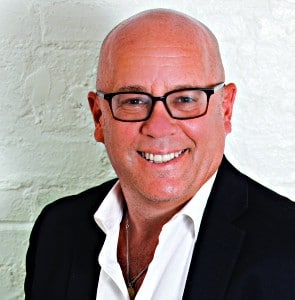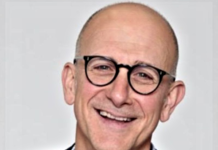
(By Gary Krantz) In his July column in Radio Ink, my old friend and colleague Eric Rhoads wrote about the early days, when the idea was new and the money was tight, and about the “lessons learned” as he and his partner began building the powerful, reliable trade magazine and voice of sales and management for the radio industry, Radio Ink.
As an entrepreneur who has helped start a company (MJI Broadcasting), worked at most of the majors (AMFM, Clear Channel/Premiere, Westwood One), and then started my own company (KMG) nine years ago, it rang true. We hear a lot of negative news about our medium, stories of “looming prepack bankruptcies, billions in debt, and the loss of creativity and risk-taking needed to compete with new competition.”
Eric’s article made me think of myself, and so many people and companies I know who are optimistic about our industry. Where others see barriers, we see opportunities. Some come from our business, some not. Some are successful, others, it remains to be seen. The common bond is a genuine passion for our industry, a vision for the future, and the willingness to work hard to make that vision happen.
I approached Eric about writing an article on this topic, and he kindly passed the idea along to Publisher Deborah Parenti and Editor Ed Ryan. At a lunch at the NAB in Austin, Ed heard me out, said yes, and asked me if I would like to do this as a series. So over the next months, watch this space for the innovators and entrepreneurs in our industry!
Jeff Warshaw, CEO of Connoisseur Media, is pushing boundaries, combining streaming with terrestrial radio in a new New York digital station targeted to millennials. It’s called Satori. Here’s how his vision came about.
Gary Krantz: Satori is described as “radio for the streaming generation,” a local service with compelling personalities, human music curation, and a concept firmly positioned against streaming music services, which are basically online jukeboxes. Where’d you get the idea?
Jeff Warshaw: I was sitting in what I call my “serenity room,” where I get my head together. And I was thinking about the future of radio — what’s happening with streaming, how to attract millennials to terrestrial radio. There are things that streaming does well and things that radio does well. And if you were designing something today, there’d be something that would offer a bit of localism like local radio, but also the unedited content you have with streaming. It felt like there was an opportunity to create the best of both worlds.
Krantz: How did you convert that idea into a business plan?Warshaw: I spent a lot of time refining the idea, then went to a couple of people I thought might get it. I was introduced to Michael “Shark” Sharkey, who I recruited to oversee our content and staffing.
The biggest issue was, how are we going to attract people? I wanted to try it out in the largest market — New York — because if I wanted something scalable, I could do it across the country. I wanted it to succeed or fail despite the competition.
At the time, I was thinking New York City, because it didn’t have an Alternative station. And I realized it would be hard to appeal to the hip hop generation without playing hip hop because it’s so popular. And so ultimately, we decided that we’d do a “blend,” and be not only a medium that was new, but a format that was new. This turned out to be a large undertaking. We did some focus groups, and ultimately, we started out in Brooklyn.
Jim Condron, our Long Island market manager, came up with the idea of the “Satmobile,” a mobile studio, bar, and listening area. It goes all over New York City to many events. It’s a huge, mobile billboard.
Krantz: By the time this article runs, it will be almost six months to the day since you launched. What have you learned?
Warshaw: One of the great benefits of digital/ streaming is that we get research quickly. We’re able to see what people are responding to, when they’re tuning in — and out. As a result, you’re watching data very carefully.
The first thing most millennials do is skip songs, which we don’t allow. It’s radio. That was a conscious decision. Also, we were asking them to understand a format that’s never been done before. This turned out to be too much to ask, on a realistic timetable. Now, it’s 100 percent hip hop, 100 percent New York. It also means that it’s unedited; we play the artist/song as it’s meant to be heard, which you can’t do on radio. That’s a real advantage.
We have hundreds of songs, compared to a playlist like Spotify — which has nothing local, no personality explaining the context of the songs. Ours is human-made, programmed by experienced programmers. The songs are chosen in a way that is most appealing, versus an algorithm or playlist. We’re also playing songs nobody else is playing, up-and-coming artists, and local NYC artists as well.
I think this is something there will be more of in the future. I believe that, in five years, there will be hundreds of local streams. And, like blogs and websites, a handful will matter. We’d like to be one of those.
Krantz: Do you feel that, because you have so much experience in starting and operating radio stations and groups, that you have an unfair advantage over that kid in the garage starting a local stream?
Warshaw: Don’t underestimate that kid. The spirit of that kid is in all that we do!
I have tremendous respect for the advantages and reach of legacy radio. If I signed on in New York with any format that was researched properly, I would probably get 1 million listeners quickly.
The huge challenge for streaming is that there are limitless options. We don’t have built-in sampling like with a radio dial. And so I’m respectful of how hard it is to start something from scratch. By definition, everyone that comes to us is somebody that has to find us, and that’s much harder than starting a radio station.
Krantz: Would you say that’s the biggest operating challenge?
Warshaw: Absolutely. We have to program things people like. We know that getting them to come to a new way of listening is the challenge. If you’re going to do something better, the wisdom says it needs to be nine times better. We need to take people used to radio and who now listen to Spotify or Pandora, and get them to try something brand-new. We need marketing, word of mouth, and a viral fan base. That takes time, and we have to be really good.
Krantz: What’s been your biggest success so far?
Warshaw: We’ve been involved with artists no one else is playing. A couple of labels are tremendous supporters. We appreciate their spirit of innovation, that they were willing to support us early on.
From one entrepreneur to another, I give a total shout-out to Daniel Glass of Glassnote Records. Some other labels were not nearly as cooperative. Glassnote didn’t have that response, which speaks to why they are so successful. They knew we were doing something innovative, and they were going to support us whether or not they had proof of instant results. I think that was one of the best parts of what we’ve done so far, having some people support us when we were brand-new.
Shark has made the pivot from alternative to hip hop, and really plunged into this world; I admire that. Versatility is something we need both in radio and in the business environment.
Krantz: You mentioned Shark. I’ve seen him in action; I’ve seen your street team. Tell us more about the team at Satori. Where do they come from? Are they from traditional radio, or outside of it?
Warshaw: It’s both. Shark and Bree [House] are traditional radio people. She’s responsible for a lot of our operations. We have Kaz, who’s a personality, but not a “radio personality”; he’s entrenched in the hip hop community. DJ Ekin has been in radio as well as being a DJ; he’s well-known in the hip hop community. So it’s a mixture. We’re not looking for the traditional “deep voice” disc jockey. We’re looking for people who know, love, and live for hip hop, know where the artists are, what’s going on in the community, and they want to get people excited about it.
Krantz: We talked earlier about the skill sets from traditional radio that apply to Satori. What have you learned about running Satori that you might apply to Connoisseur?
Warshaw: We just rolled out a radio station in New Haven called “Mod102.3,” heavily influenced by Satori’s original multi-genre approach. We’re also rethinking our streaming strategies throughout all of Connoisseur. In 2018, we’ll build a bunch of different strategies. Because even if we don’t make a lot of money on streaming yet, we’re working on the use of data/digital and applying it to managing Connoisseur. It’s almost like Satori is an R&D division for us.
Krantz: What advice do you give to current and future innovators and entrepreneurs in our business?
Warshaw: Try and balance the conviction and dedication you have for your vision with the need to adapt quickly based on data and circumstances.





